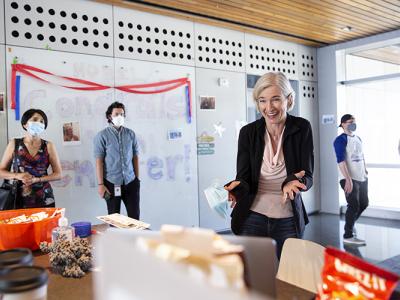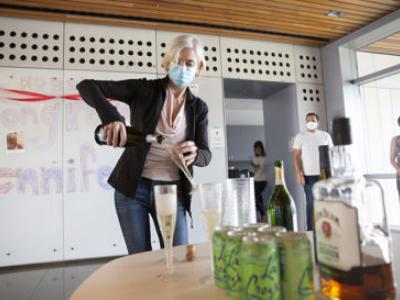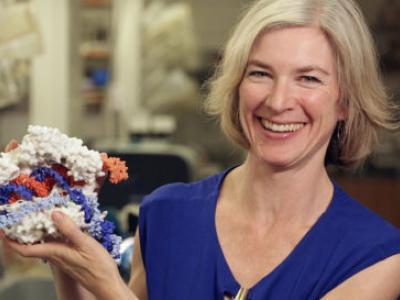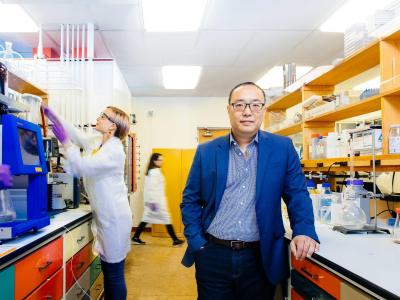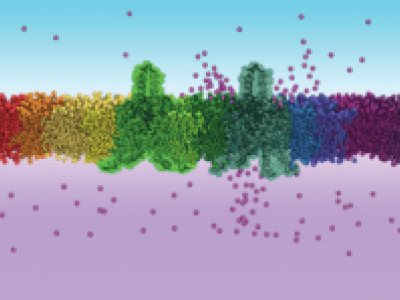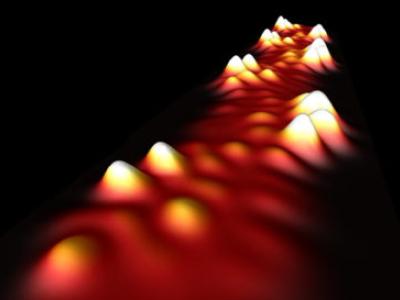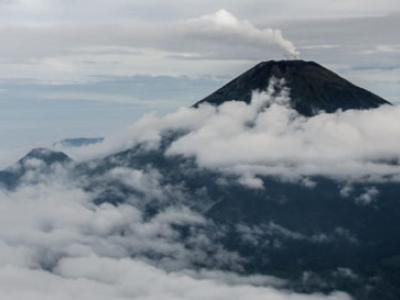In just two days, UC Berkeley is two Nobel Prizes richer. Today (Wednesday, Oct. 7), biochemist Jennifer Doudna won the 2020 Nobel Prize in Chemistry, with her colleague Emmanuelle Charpentier, for the co-development of CRISPR-Cas9, a revolutionary gene-editing tool that allows scientists to rewrite DNA.
Research News
Learn more about UC Berkeley's researchers and innovators.
Showing 1169 - 1184 of 3459 Results
When UC Berkeley biochemist Jennifer Doudna went to sleep last night, she didn’t give serious thought to her chance of winning the Nobel Prize in Chemistry. Then, a phone call woke her up today, just before 3 a.m. It was a reporter, asking for a comment about winning the prize. Doudna said her initial response was, “Who won?”
Jill Banfield is a UC Berkeley professor who studies the structure, functioning and diversity of microbial communities in natural environments and the human microbiome. In this “On My Mind” feature, she describes how she first met Berkeley’s newest Nobel laureate, Jennifer Doudna, who gave thanks to Banfield at Wednesday’s press conference.
Still don’t understand how CRISPR — clustered regularly interspaced short palindromic repeats — works or what it means for chemistry, medicine or human society?
University of California, Berkeley, biochemist Jennifer Doudna today won the 2020 Nobel Prize in Chemistry, sharing it with colleague Emmanuelle Charpentier for the co-development of CRISPR-Cas9, a genome editing breakthrough that has revolutionized biomedicine.
Genzel shared half the prize with UCLA's Andrea Ghez for mapping the Milky Way's central black hole; Roger Penrose received the other half.
Polina Lishko, a physiologist whose work at UC Berkeley has already led to the development of promising new non-hormonal contraceptives for women and could lead to male or unisex contraceptives, has been chosen to receive a 2020 MacArthur “genius” Award.
The widely reported deaths of Michael Brown and Philando Castile reflect a grim truth in this country: According to data collected by The Washington Post, around 1,000 people are shot and killed by the police in the U.S. each year, and Black men are more than twice as likely to be victims as white men.
Throughout the grim reality of a global pandemic that has disrupted normal life for months, one persistent bright spot has been the robust response of the biomedical research community. The battle to develop vaccines and drugs to fight the SARS-CoV-2 virus and COVID-19, the disease which it causes, has highlighted the tremendous benefits of investing in science aimed at developing innovative research platforms and tools. When a new disease like COVID-19 arises, such platforms and tools developed for other purposes can be quickly pivoted to provide solutions to the emerging threat.
A new study from researchers at the UC Berkeley School of Public Health and Stanford University School of Medicine has determined that higher severe maternal morbidity rates for Black, American Indian/Alaska Native, and mixed-race women may be reduced if they had delivered in the same hospitals as non-Hispanic White women.
Specialized cells in our bodies utilize protein nanosensors to regulate essential processes including our metabolism, heart rate, and breathing.
UC Berkeley ranks nationally as the No. 1 public and second-best university in the world overall for undergraduate programs that produce entrepreneurs who go on to obtain venture funding, according to PitchBook’s 2020 university rankings.
A new Berkeley IGS Poll revealed Californians’ opinions about a variety of political topics, including reforms to property taxes, climate change-fueled wildfires and the selection of California’s Sen. Kamala Harris as former Vice President Joe Biden’s presidential running mate.
Transistors based on carbon rather than silicon could potentially boost computers’ speed and cut their power consumption more than a thousandfold — think of a mobile phone that holds its charge for months — but the set of tools needed to build working carbon circuits has remained incomplete until now.
The Greenland ice sheet owes its existence to the growth of an arc of islands in Southeast Asia — stretching from Sumatra to New Guinea — over the last 15 million years, a new study claims.
Solar flares are violent explosions on the sun that fling out high-energy charged particles, sometimes toward Earth, where they disrupt communications and endanger satellites and astronauts.

